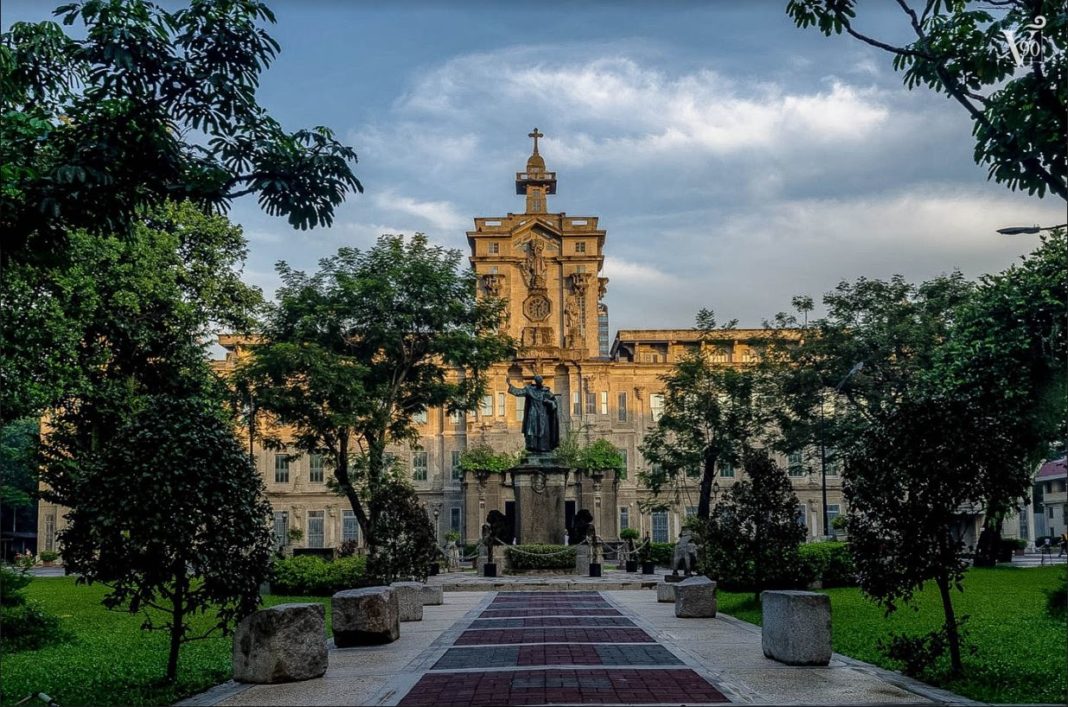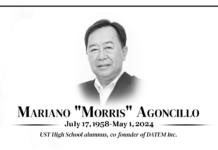CONCERNS have been raised on the University’s e-Learning system as the lack of familiarity of professors and UST’s poor internet connection are hampering the transition to a digital campus.
Prof. Cheryl Peralta, UST vice rector for academic affairs, admitted to challenges in transitioning to “blended learning” or the alternate use of online and face-to-face classes, which coincided with the implementation of new curricula.
“Iba-iba rin kasi ‘yong edad ng mga faculty [members], so iba-iba rin ‘yong level ng technology expertise nila,” Peralta told the Varsitarian. “Bago [rin] kasi ‘yong curriculum. While they are teaching new content, they are also trying a new strategy (online classes), so it might be a bit of a challenge [for them],” she added.
The UST Educational Technology Center (EdTech) has facilitated trainings and seminars for faculty members to assist in the adoption of technology in teaching strategies.
A Center for Innovative Teaching and Educational Delivery was also established to teach new “learning principles and practices,” Peralta said.
The academic affairs head said the administration was addressing concerns on poor internet connection in the campus, as this was preventing students and teachers from adjusting to online classes.
Two faculty members from the Faculty of Arts and Letters and Senior High School, who spoke on condition of anonymity, aired concerns over the implementation of the University’s e-Learning system.
An assistant professor said there was a need to further improve the scheduling classes.
“[The University should] not combine the online and face-to-face session on one particular day…It’s too difficult for students [to juggle between two types of learning,” she told the Varsitarian.
The other faculty member pointed out that the new strategy would have a selective compatibility with other subjects.
“It’s just a waste of effort in terms of [conducting lectures]. May instance kasi na magpopost ako ng reading materials online pero sa susunod na mag meet kami ng klase ko, ididiscuss ko lang rin naman,” she said.
The SHS instructor questioned the capability of professors in adapting to the new system, saying that not all professors are “computer-literate” enough.
“Hindi lang ‘yong preparedness regarding trainings on how to use the online platform [ang kailangan]. ‘Yong emotional or psychological preparedness ng mga traditional teachers na tulad ko, [ang dapat din nila tignan],” she said.
A third faculty member from Artlets said critics of e-learning should have an open mind to the adoption of new technology.
“The problem with some faculty members is they tend to shoot down innovation. Some are stuck in their ivory towers and do not realize that the way students learn and absorb knowledge has changed drastically,” he said.
“Some of these critics also do not attend training sessions, which is unfortunate. As university faculty, we need to continuously improve our content and teaching methods,” he added.
Blended learning
The “blended learning” strategy was introduced in Academic Year 2018 to 2019 in a bid to ease the work schedules of professors, and was initially applied to general education (GE) courses, Peralta said.
It was rolled out to first year students, who attended online and face-to-face classes alternately.
“Isa sa mga feedback [na natanggap namin galing sa professors ng GE courses] ay ‘kalat-kalat’ ang load [nila]. [That’s why] we started to cluster [them] kasi nagiging issue rin ‘yong room allocation and facility availability,” she said.
She said the strategy would also help students manage their workload especially those participating in international programs with partner universities abroad.
“Sa mga first year muna kami tumutok kasi kailangan namin ng patterns na pwede namin pagbasehan for future programs,” she added.
Medical technology freshman Dhon Aldous Castro said the implementation of online classes cannot be regarded as a practical strategy to teach students, especially those living in dormitories that do not have internet connections.
“Most of my blockmates are having a hard time [in] using the e-learning site. They either pass their online task on the wrong place or cannot connect to the [website at all],” Castro told the Varsitarian in a Facebook message.
He said the University was not ready to pursue a “blended learning” strategy because of lack of reliable internet connections.
“[T]hough [UST has its own Wi-Fi network], it is still unreliable because [it] is inaccessible and often times, too slow,” said Castro.
“[Students often need to] go to coffee shops or internet cafés just to attend their online class, which is not a practical thing to do because you still have to pay for those services,” he added.
Computer desktops with internet connections, however, are available for use free of charge on the first and second floors of the Miguel de Benavides Library. A. K. H. C. and N. J. N. S.















